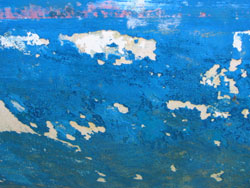
One of the most important sailing decisions you’ll make this year is your choice of antifouling. Even the most moderate fouling can lose you knots. This is why racing sailors can often be seen scrubbing their hulls or dry-sailing to ensure their hull is smooth and clean. But most prefer a lower maintenance method to last the season.
Antifoul
Coastal waters contain an array of animal and vegetable organisms, many of which are looking for somewhere to settle and breed. Any underwater surface which will stay still long enough will do. Antifouling manufactures break the fouling group down in to three classes: weed, slime and shell.
- Weed - Although it looks worse when hanging from the hull, weed is the easiest fouling to treat with antifouling biocides. If it does take hold, its grip is weak and a basic scrub will remove it.
- Slime – Slime can include grass and sediment and is a difficult type of fouling to combat as it can clog antifouling paint, reducing its effect. Co-biocides can deter it but if it takes hold, scrubbing is the only answer.
- Shell – the worst of the three. Shell fouling gives a rough surface to the hull which seriously impacts on speed. Several animal growths contribute to this type of fouling, including barnacles, tubeworm and hydroids, the frond-like organisms you will see amongst weed on hulls.
What does it do?
Any antifouling system has three methods to prevent marine growth. The first is to try to repel growth by creating an environment which will discourage it from attaching to the hull. Paint will do this by continually leaching a biocide into the water - creating a hostile environment.
If fouling still attaches, the same biocides can repel the fouling by destroying its ability to hang on to the hull. Some growths can still tolerate them, such as shell fouling.
In some areas, the balance of warmth and salinity is ideal for barnacle spat. A phenomenon where millions of young barnacles look for somewhere to settle. These attach to the hull and can only be removed by scraping. Fortunately barnacle spat only occurs every five to ten years.
Which antifoul?
Antifouling falls into two categories: eroding (self-polishing) and hard. Eroding antifoulings are commonly used for cruising yachts and displacement powerboats which stay afloat throughout each tide. As these craft are slow, the scrubbing action of the water is so small, the paint needs to discourage growth without the aid of significant waterflow. To do this, the paint dries in such a way that the biocides are distributed evenly through a resin matrix, which erodes over the course of the season so that fresh biocide is continually exposed to the water.
The biocide is usually copper oxide, although for aluminium hulls alternatives are available to avoid galvanic effects. The interesting thing about the use of copper is that bright white antifouling tend to be less effective than coloured paints, as manufacturers are forced to use a lower copper oxide concentration or a different biocide to preserve the colour. For this reason many antifoulings are actually off-white.